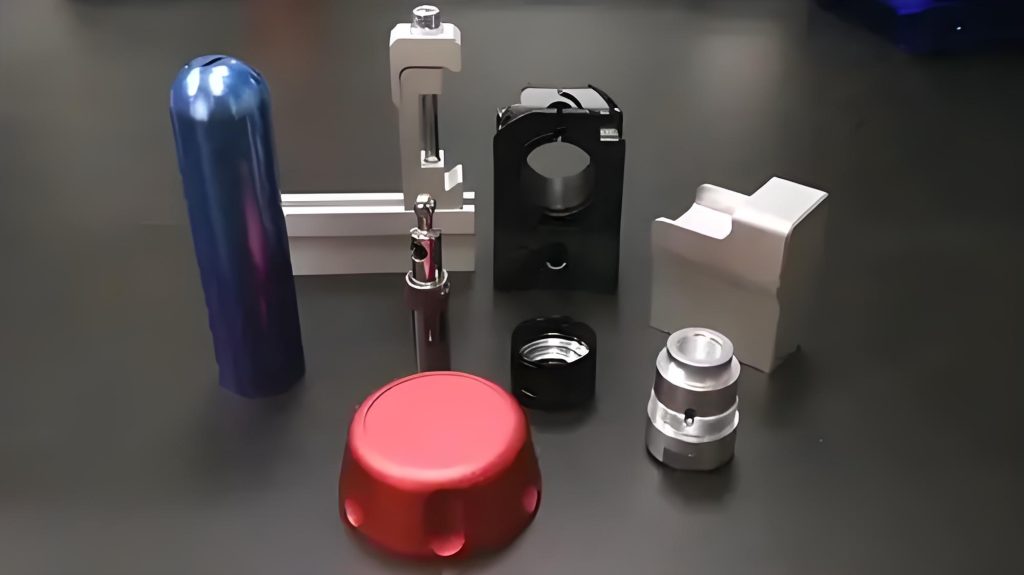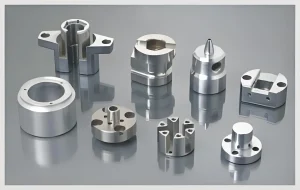Introduction
In the realm of CNC parts machining, hard oxidation machining has emerged as an indispensable process, playing a pivotal role in enhancing the performance and durability of various components. This article delves deep into the necessity of hard oxidation machining in CNC parts machining, exploring its benefits, applications, and the value it brings to the overall manufacturing process. Whether you’re a manufacturer, engineer, or simply interested in the world of CNC machining, understanding the importance of hard oxidation can provide valuable insights into creating high-quality, reliable parts.

What is Hard Oxidation in CNC Parts?
Hard oxidation, also known as anodic oxidation, is an electrochemical process that forms a thick, hard, and durable oxide layer on the surface of metal parts, particularly those made of aluminum and its alloys in the context of CNC machining. This process involves immersing the CNC part in an electrolyte solution and applying an electric current. The part acts as the anode, and oxygen is released at its surface, which then reacts with the metal to form a tightly adherent oxide layer.
The resulting oxide layer has several remarkable characteristics. It is significantly harder than the base metal, providing enhanced wear resistance. For example, in CNC – machined aluminum parts used in automotive engines or aerospace components, the hard – oxidized surface can withstand the constant friction and mechanical stress much better than the untreated metal. Additionally, it offers excellent corrosion resistance. Aluminum is prone to oxidation in the presence of air and moisture, but the hard – oxidized layer acts as a barrier, preventing further oxidation and degradation of the metal.
In the industry, hard oxidation has become a standard surface treatment for many CNC – produced parts. It is widely used across various sectors, from the manufacturing of consumer electronics, where the durability and aesthetic appearance of aluminum casings are crucial, to heavy – duty industrial machinery, where parts need to endure harsh operating conditions.
The Role of Hard Oxidation in CNC Parts Machining
Enhancing Wear Resistance
One of the primary functions of hard oxidation in CNC parts is to enhance their wear resistance. In various mechanical systems, CNC – machined parts are often subjected to constant friction and abrasion. For instance, in the manufacturing of conveyor belts used in industrial production lines, the CNC – made rollers and moving parts are in continuous contact with other components. A hard – oxidized surface on these parts can significantly reduce the rate of wear. The hard oxide layer acts as a protective shield, preventing the base metal from being directly eroded by the frictional forces.
In the automotive industry, CNC – machined aluminum alloy pistons are a prime example. These pistons operate under extreme conditions within the engine, experiencing high – speed reciprocating motion and intense friction against the cylinder walls. Through hard oxidation, the piston surface becomes more resistant to wear, ensuring a longer service life and better engine performance. This not only reduces the frequency of part replacements but also improves the overall reliability of the vehicle.
Improving Corrosion Resistance
Corrosion is a major concern for CNC parts, especially those used in harsh environments. Hard oxidation provides an effective solution by improving the corrosion resistance of the parts. The oxide layer formed during the hard oxidation process is highly stable and acts as a barrier against corrosive agents such as moisture, chemicals, and salts.
In the marine industry, CNC – fabricated aluminum components used in ships and offshore platforms are constantly exposed to seawater, which is highly corrosive. Hard – oxidized aluminum parts can withstand the harsh marine environment much better than untreated ones. The hard – oxidized layer prevents the aluminum from reacting with the salt – laden seawater, thus protecting the integrity of the parts. Similarly, in chemical processing plants, where parts are exposed to various corrosive chemicals, hard – oxidized CNC parts can maintain their functionality and structural integrity over a longer period.
Increasing Surface Hardness
Hard oxidation plays a crucial role in increasing the surface hardness of CNC parts. The hardness of the oxide layer formed is much higher than that of the base metal. This increased hardness enhances the overall performance of the parts in several ways. For example, in the production of precision – machined gears for machinery, a hard – oxidized surface on the gears can improve their load – bearing capacity. The harder surface can withstand higher pressures and forces without deformation, ensuring smooth operation and accurate meshing of the gears.
In the aerospace industry, CNC – machined aluminum components need to be both lightweight and strong. Hard oxidation not only increases the surface hardness of these components but also improves their fatigue resistance. The hard – oxidized layer can better withstand the cyclic stresses that the parts experience during flight, thereby enhancing the safety and reliability of the aircraft.
The Value of Rapidefficient in the CNC Machining Market
High – Efficiency Processing
Rapidefficient stands out in the CNC machining market for its high – efficiency processing capabilities. With state – of – the – art equipment and advanced technological solutions, it can significantly reduce the production time of CNC parts. For example, its high – speed machining centers are capable of rapid material removal rates, allowing for faster completion of rough machining operations. This not only shortens the overall production cycle but also enables manufacturers to meet tight deadlines and increase their output capacity.
In addition, Rapidefficient’s optimized workflow and intelligent scheduling systems ensure that every stage of the CNC machining process, from design to final product, is carried out seamlessly. This streamlined approach minimizes downtime between operations, such as tool changes and workpiece setups, further enhancing the overall efficiency. In industries where time – to – market is crucial, like consumer electronics, the ability to quickly produce high – quality CNC parts gives Rapidefficient a competitive edge.
Quality Assurance
Quality is at the core of Rapidefficient’s operations. The company employs a team of highly skilled engineers and technicians who are well – versed in the latest CNC machining techniques. They use precision measuring instruments and strict quality control procedures at every step of the manufacturing process. From the initial selection of raw materials to the final inspection of the finished parts, every aspect is carefully monitored to ensure that the parts meet or exceed the required quality standards.
Rapidefficient also invests in advanced machining equipment with high – precision capabilities. For instance, its multi – axis CNC machines can achieve extremely tight tolerances, making it possible to produce parts with complex geometries and high – accuracy requirements. In the aerospace and medical device industries, where the quality and reliability of parts are of utmost importance, Rapidefficient’s commitment to quality assurance makes it a preferred choice for manufacturers.
Recommended Rapidefficient CNC Aluminum Processing Service Providers
If you’re seeking rapidefficient CNC aluminum processing services, several notable providers can meet your needs.
Alcoa is a globally recognized leader in the aluminum industry. They offer a wide range of CNC aluminum processing services with a focus on high – speed machining and strict quality control. Their advanced facilities and experienced team ensure that they can handle projects of various scales, from small – batch custom parts to large – scale production runs.
Another excellent option is Aluco. Specializing in CNC aluminum machining, Aluco has state – of – the – art equipment that enables rapid and precise processing. They are known for their ability to produce complex aluminum parts with tight tolerances, making them a reliable choice for industries such as aerospace, automotive, and electronics.
For those looking for a more specialized service, Alloyed Metals stands out. They have a deep understanding of different aluminum alloys and their unique properties, allowing them to provide tailored CNC processing solutions. Their expertise in hard oxidation and other surface treatments, combined with rapidefficient machining, results in high – quality aluminum parts that meet the most demanding requirements.
In conclusion, hard oxidation machining is an essential aspect of CNC parts machining, offering numerous benefits in terms of wear resistance, corrosion resistance, and surface hardness. Rapidefficient, with its high – efficiency processing and quality assurance, has a significant value in the CNC machining market. When it comes to CNC aluminum processing, the recommended service providers can offer the rapidefficient and reliable services you need to bring your projects to success.
Conclusion
In conclusion, hard oxidation machining is of utmost necessity in CNC parts machining. It significantly enhances the wear resistance, corrosion resistance, and surface hardness of CNC parts, making them more suitable for various applications in different industries. The ability of hard oxidation to improve the performance and durability of parts not only reduces maintenance and replacement costs but also contributes to the overall reliability and efficiency of mechanical systems.
Rapidefficient, with its high – efficiency processing and unwavering commitment to quality assurance, has carved out a significant value in the CNC machining market. Its advanced equipment, optimized workflows, and skilled workforce enable it to meet the diverse needs of manufacturers across multiple sectors. By choosing rapidefficient CNC aluminum processing service providers like Alcoa, Aluco, and Alloyed Metals, businesses can ensure that their projects are executed with speed, precision, and the highest quality standards. Whether it’s for the production of automotive components, aerospace parts, or consumer electronics, the combination of hard oxidation machining and rapidefficient CNC processing is a recipe for success in the highly competitive manufacturing landscape.






